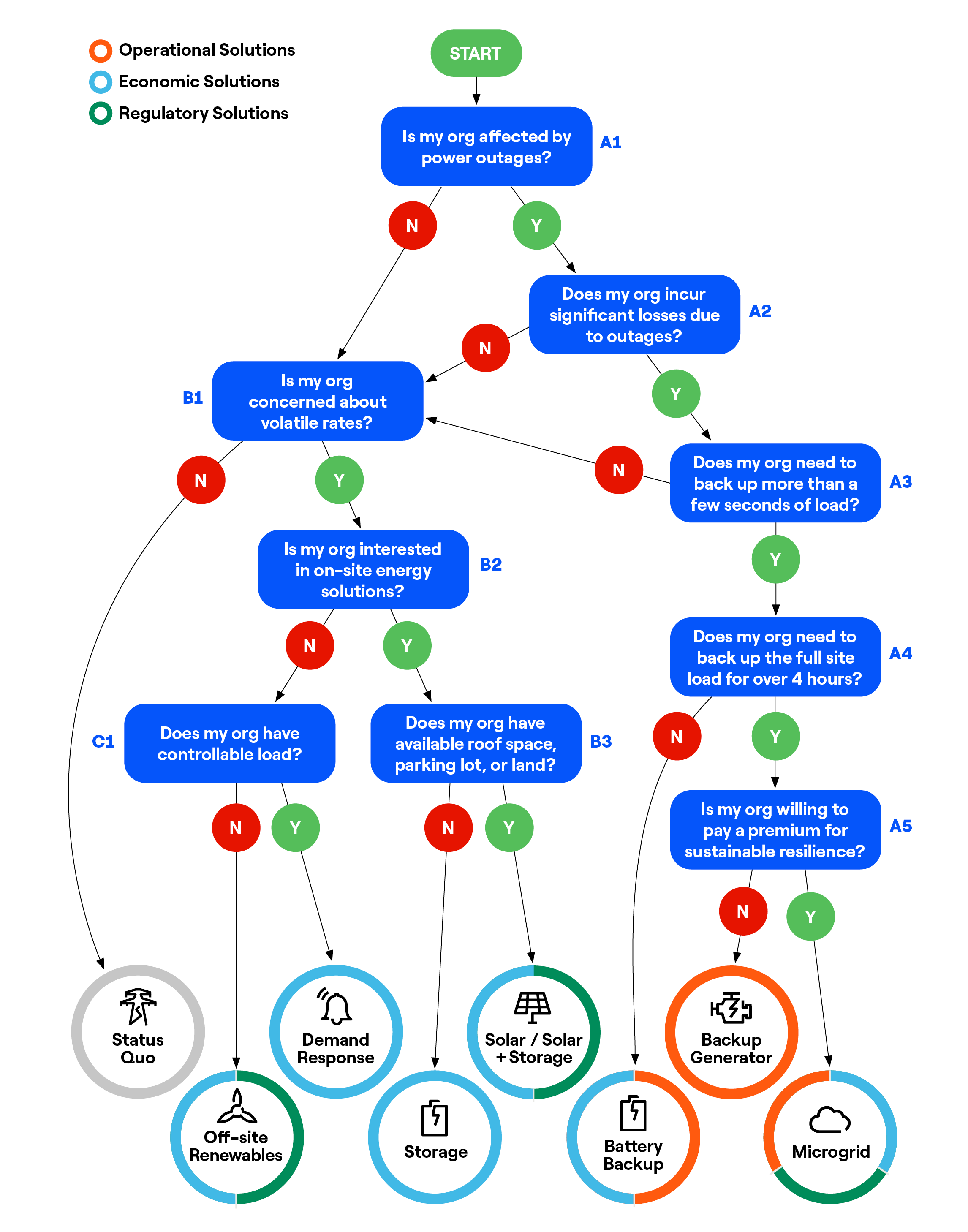Energy resilience is increasing in importance, the central theme of our new eBook “How to Evaluate Your Energy Resilience Needs.” Yet, as energy resilience becomes more critical to ensuring continuity of energy supply and mitigating energy market and regulatory risks, the decision-making process becomes more complex.
Many of our customers come to us overwhelmed by the sheer number of options and unsure of the best path to energy resilience, often either drastically overestimating or underestimating the level of energy resilience they will need. To help you navigate this complex landscape, we have created a simplified decision tree that guides you through each step of the energy resilience decision-making process and shows the best initial solution based on your specific goals and budget.
The energy resilience decision tree
We’ve developed the decision tree infographic below based on questions we typically ask our customers when scoping their energy resilience needs. This decision tree is a very simplified visualization of the decision-making process. Many other factors and a great deal more discussion and nuance are involved in a final decision. But this is intended to give you a basic sense of what energy resilience solutions could work for your organization.
At a high level, three main categories of energy solutions can provide some form of energy resilience. We have differentiated them by their letter in the decision tree.
- Category A consists primarily of operational resilience solutions like microgrids, backup generators, and battery backups that enable your facility to keep the lights on during grid outage events. We have differentiated them by their carbon footprint and the duration of energy resilience they can provide.
- Category B consists of on-site distributed energy solutions like solar, storage, and solar + storage that enable your facility to offset its grid consumption with renewable self-generation and better manage demand and grid-related charges. While they don’t provide operational resilience, they do provide regulatory resilience (e.g., through solar) and economic resilience (e.g., through storage).
- Category C consists of off-site renewable solutions like power purchase agreements (PPAs), virtual power purchase agreements (VPPAs), and demand response solutions that enable your facility to mitigate against volatile energy rates either by entering a long-term financial contract for power (e.g., PPAs, VPPAs) or by offsetting costs with market revenues (e.g., demand response).

Combining energy resilience solutions to amplify benefits
As the above decision tree is a simplified view of the decision-making process, the result is one solution to fit your organization’s primary energy resilience needs. In reality, however, you may have many competing and sometimes overlapping priorities, which require a portfolio of solutions instead of a single solution.
In our eBook, “How to Evaluate Your Energy Resilience Needs,” we offer more detail on the questions involved in the decision tree, provide examples for combining energy resilience solutions to amplify energy resilience benefits, and offer a breakdown of the available solutions that can be part of an energy resilience strategy to safeguard your organization from energy supply interruptions, energy market volatility, and regulatory risks.
Talk to us about your energy resilience needs
There are many combinations of energy solutions that can provide energy resilience – the challenge is finding the optimal mix that suits your specific needs and requirements. You can read our full eBook, “How to Evaluate Your Energy Resilience Needs,” to gain a more in-depth understanding of the energy resilience solutions available to your organization. But to truly understand how your organizational priorities align with different solutions, it’s best to discuss your options with an energy partner like Enel North America. Contact us now to learn more.
